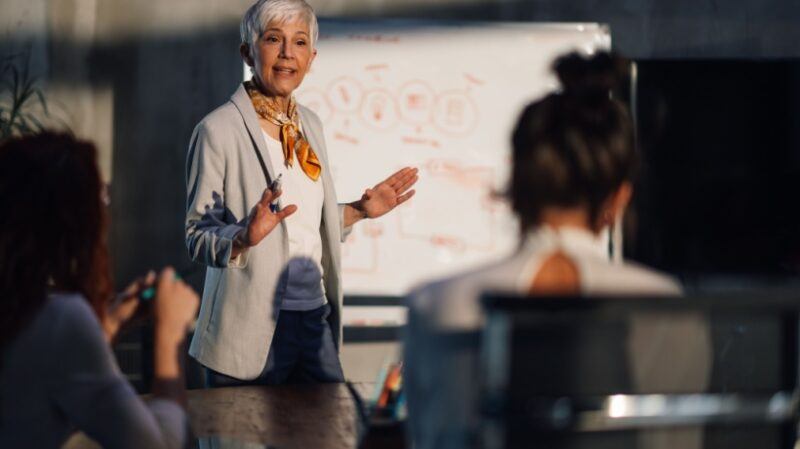
Unlocking the Power of Storytelling with Scene Control
Storytelling serves as a fundamental pillar in effective learning design, igniting emotional engagement while enhancing comprehension. This art transforms abstract concepts into relatable narratives. Particularly in the realm of digital learning, animated stories emerge as a robust medium. However, conventional animated videos often lack the flexibility and interactivity essential for a dynamic learning experience.
In standard setups, presenters typically play videos during live sessions, stepping back as the narrative unfolds. This format can disrupt the session’s flow, making it awkward to pause, skip forward, or revisit critical moments. Furthermore, presenters often find themselves unable to adapt the story to audience inquiries or time constraints, hindering the overall engagement of even the most captivating content.
Understanding Scene-Based Presentation
Enter scene-based presentation, a revolutionary approach that tackles these challenges head-on. Instead of presenting an entire video from beginning to end, this method segments the story into manageable scenes, each representing a unique visual and narrative unit. Embedded within individual presentation slides, these scenes empower the presenter to lead the audience through the journey at their own pace. This results in a more interactive and flexible experience, marrying the emotional resonance of storytelling with the agility of live presentations.
Key Benefits of the Scene-Based Presentation Method
Let’s delve into the key advantages this innovative approach offers:
1. Presenter Empowerment
Scene-based delivery enhances the presenter’s control. After each scene, they can pause to elaborate, answer questions, or gauge audience understanding, fostering dialogue and creating spaces for spontaneous interactions—something traditional video playback rarely accommodates.
2. Enhanced Cognitive Processing
Each scene breaks down information into digestible segments, aligning with cognitive load theory, which posits that chunking complex content aids in effective learning and retention. This method naturally supports microlearning principles.
3. Adaptive Timing
Presenters have the flexibility to adjust the pace according to learners’ needs or time constraints. Unlike traditional videos, scenes can be skipped, repeated, or reordered, making them suitable for various contexts—whether in a live workshop or virtual training session.
4. Preserved Narrative Integrity
Even with structural adjustments, the essence of storytelling remains intact. Characters, pacing, tone, and visuals continue to engage the audience, but now presenters navigate this journey with enhanced autonomy.
A Real-World Example
Imagine a facilitator conducting a professional development session on effective leadership communication. They aim to leverage an animated story that illustrates common pitfalls in feedback conversations. In a conventional format, they would press play, hoping for the story to resonate.
By employing a scene-based approach, they can divide the video into six key scenes, each depicting a moment in the narrative (such as opening dialogue, miscommunication, emotional responses, and resolution). After each scene, the facilitator pauses to prompt the audience with reflective questions, share relevant frameworks, and gather feedback, making the session more interactive and fluid without sacrificing the emotional impact of the story. This method proves advantageous in contexts such as:
- Introducing new processes or tools during onboarding.
- Communicating strategic initiatives to employees across various locations.
- Training facilitators who aim to model interactive delivery techniques.
- Teaching soft skills using realistic dialogues and branching scenarios.
Scene-based presentation is versatile, not tied to any specific tool or format. Most animation software allows for the export of content in short segments, while popular presentation platforms support video integration. Ultimately, the focus shifts from passive viewing to active storytelling.
The Importance of Scene-Based Presentation Today
As learning transitions toward personalized, blended, and facilitator-led formats, the tools we use must adapt. Today’s learners expect more than just static slides or passive video consumption; they seek engagement, relevance, and flexibility.
The scene-based presentation model meets these expectations head-on. It transforms storytelling from a mere viewing experience into a collective journey, with the presenter acting as a guide rather than just a narrator. This method also accommodates inclusive learning design, allowing presenters to tailor the pace to suit diverse learner needs, provide supplementary explanations, or slow down for language learners—all while maintaining the storytelling flow.
Conclusion
The scene-based presentation approach heralds a new path for digital storytelling in the learning space. By blending structure with narrative and control with creativity, it presents a solution to one of the greatest challenges in live and virtual training: engaging learners while remaining responsive.
For learning professionals eager to deliver enriching experiences that resonate emotionally and structurally, this innovative method is a forward-thinking step. It prompts us to reevaluate the interplay between video, slides, and audience interaction, crafting narratives that truly come alive.



